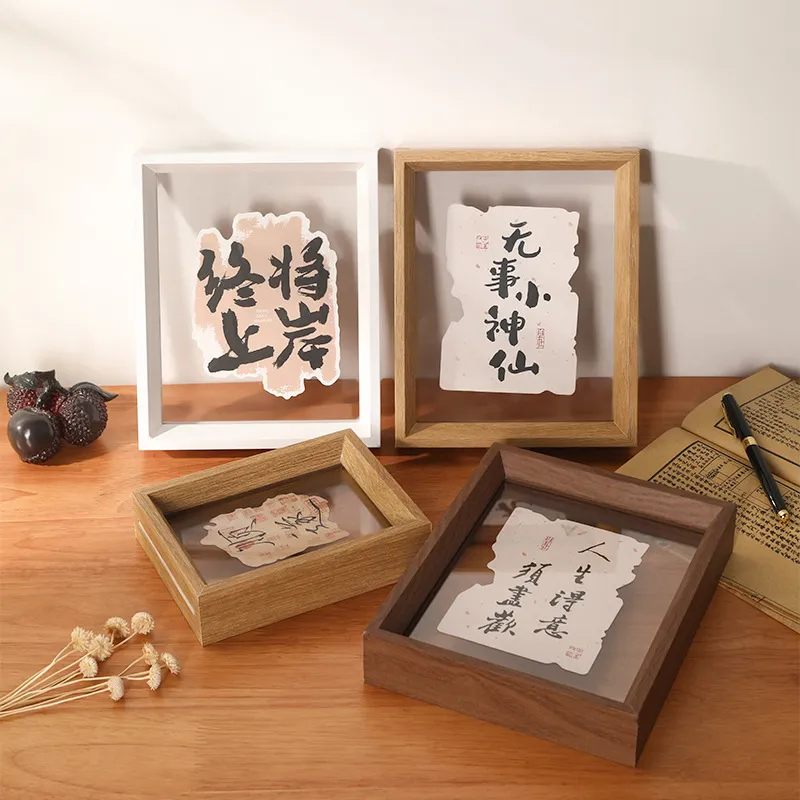Overview of the Picture Frame Industry in China
The picture frame industry in China has evolved into a significant sector within the global market, playing a crucial role over the last few decades. Historically, China began producing picture frames in smaller quantities, primarily catering to local demand. However, with the advent of globalization and increasing export opportunities, Chinese manufacturers have established themselves as key players in the international market. Their ability to produce frames in large volumes, combined with competitive pricing, has allowed them to dominate both wholesale and retail sectors worldwide.
Design trends in picture frames have changed dramatically over time, reflecting cultural and aesthetic shifts. Contemporary consumers frequently seek frames that not only serve a functional purpose, but also align with their personal style. This demand has spurred a diverse range of designs, from traditional wooden frames to modern metallic and minimalist styles. Manufacturers in China have adeptly adapted to these trends, showcasing their flexibility and responsiveness to changing consumer preferences.
Common materials used in the manufacturing process include wood, metal, acrylic, and composite materials. Each of these materials presents unique benefits; for instance, wood offers timeless elegance while metal provides durability and modernity. Technological advancements have also played an instrumental role in optimizing production processes. Automated machinery and precision cutting techniques have drastically improved efficiency, enabling manufacturers to produce high-quality frames that meet global standards.
As the industry continues to grow, Chinese manufacturers have increasingly focused on adhering to international quality norms, enhancing their credibility in the global market. The ability to export picture frames worldwide not only signifies the industry’s capacity for innovation but also its commitment to meeting the diverse needs of consumers. Through this dynamic interplay of tradition and modernity, China has solidified its status as a leader in the picture frame industry, setting benchmarks for quality and design resilience across the globe.
Finding the Right Manufacturers and Wholesale Suppliers
When sourcing picture frames in China, identifying reliable manufacturers and wholesale suppliers is crucial for ensuring quality and consistency in your products. There are various effective methods to streamline this process, which can help in finding reputable suppliers.
One of the most efficient ways to locate manufacturers is through online directories. Websites such as Alibaba, Global Sources, and Made-in-China provide extensive lists of suppliers, complete with company profiles and customer reviews. These platforms often allow buyers to filter results according to specific needs, such as production capacity, certifications, and minimum order quantities. Conducting thorough research on these online platforms is essential for identifying potential partners.
Attending trade shows is another beneficial strategy. Events such as the Canton Fair or specialized exhibitions for home decor and accessories offer opportunities to meet manufacturers face-to-face. At these shows, buyers can assess product quality, negotiate pricing, and establish personal relationships that can lead to better communication and trust over time. Additionally, interacting with suppliers directly allows buyers to gain insights into their production capabilities and customization options.
It is also important to evaluate key attributes of potential suppliers. Look for those who emphasize quality assurance, showcasing their quality control processes and certifications. Inquire about their production capabilities, ensuring they can meet your volume requirements and timeline. Customization options should align with your product vision, so assess their willingness to accommodate unique requests. Furthermore, prioritize suppliers with ethical manufacturing practices to reflect positively on your brand.
Once potential partners are identified, navigating the negotiation process becomes critical. Be clear about your expectations regarding pricing, production timelines, and logistics. Understanding the importation aspects, such as tariffs and shipping, can help you manage costs effectively. Reputable suppliers should be willing to engage in open discussions about these facets.
Finally, it is beneficial to leverage resources and networks for further exploration. Platforms such as trade associations can provide access to lists of vetted suppliers and additional insights into market trends.






